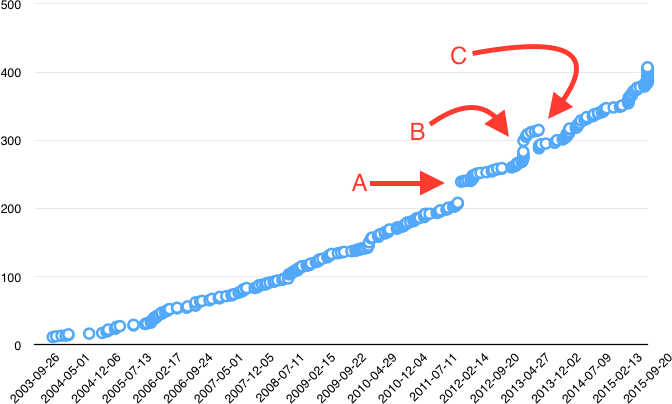Evolution of the number of CCID readers
Regularly I add support of new smart card readers in the list of CCID devices. I wanted to know how regularly I did that over the lifetime of the project (more than 12 years now).
So I extracted some numbers from the CCID driver git repository to generate a graphic.
Graph

I am really surprised by the linearity of the curve.

The linear correlation equation is (according to Numbers): y = 1.132e-6 x -159.63
That is a growth rate of 1.132x10-6 readers per second or 36.7 readers per year.
The curve is even better approximated by a polynomial equation in x2. The coefficient of determination R2 is then equal to 0.9949 (closer to 1.0) instead of 0.9753 for the linear correlation.

Accidents
I note 3 "accidents" or fast evolutions:
- A is 2012-01-27 with 31 readers added
It correspond to the date I stopped editing the file by hand and generate it using the Python scriptgenerate_supported_readers.py
Commit 54792337e5c0aea467ffbfeeb96a2503c930077a
- B is 2013-04-16 with 16 readers added
This time I added support of composite devices. Each composite device with N CCID interfaces count as N readers.
commit f431eb4b08be4f6b0a1a95a033827c82d218c81b
- C is 2013-08-05 with 27 readers removed
This time I removed the duplicated entries (2 readers with the same VendorID and ProductID).
commit 13294eb66c52beff755048c1e0c18309710a4cd8
Conclusion
The number of supported CCID readers continues to grow. I do not expect the growth rate to decrease.I guess some very old smart card reader models are no more sold. And are, or not, replaced by new newer models.
You can list the readers sorted by "seniority" using the Readers sorted by 'release' field page and discover the first 7 readers included in version 0.1.0 of the driver.